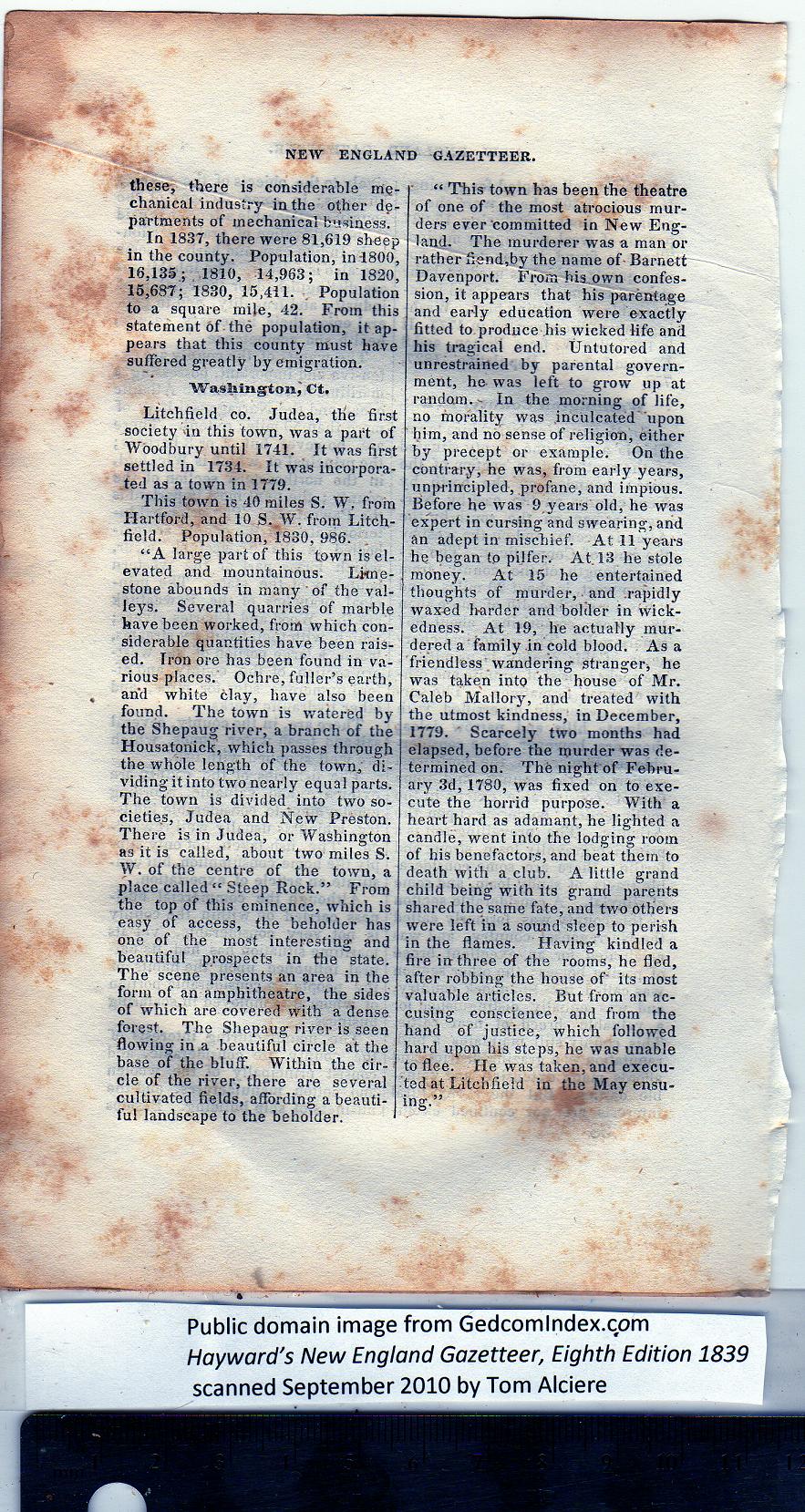|
these, there is considerable me-
chanical industry in the other de-
partments of mechanical business.
In 1837, there were 81,619 sheep
in the county. Population, ini800,
16,135; 1810, 14,963; in 1820,
15,687; 1830, 15,411. Population
to a square mile, 42. From this
statement of the population, it ap-
pears that this county must have
suffered greatly hy emigration.
Washington, Ct.
Litchfield co. Judea, the first
society in this town, was a part of
Woodbury until 1741. It was first
settled in 173 4. It was incorpora-
ted as a town in 1779.
This town is 40 miles S. W. from
Hartford, and 10 S. W. from Litch-
field. Population, 1830, 986.
“A large part of this town is el-
evated and mountainous. Lime-
stone abounds in many of the val-
leys. Several quarries of marble
have been worked, from which con-
siderable quantities have been rais-
ed. Iron ore has been found in va-
rious places. Ochre, fuller’s earth,
and white clay, have also been
found. The town is watered by
the Shepaug river, a branch of the
Housatonick, which passes through
the whole length of the town, di-
viding it into two nearly equal parts.
The town is divided, into two so-
cieties, Judea and New Preston.
There is in Judea, or Washington
as it is called, about two miles S.
W. of the centre of the town, a
place called “ Steep Rock.” From
the top of this eminence, which is
easy of access, the beholder has
one of the most interesting and
beautiful prospects in the state.
The scene presents an area in the
form of an amphitheatre, the sides
of which are covered with a dense
forest. The Shepaug river is seen
flowing in a beautifui circle at the
base of the bluff. Within the cir-
cle of the river, there are several
cultivated fields, affording a beauti-
ful landscape to the beholder. |
“ This town has been the theatre
of one of the most atrocious mur-
ders ever'committed in New Eng-
land. The murderer was a man or
rather fiend,by the name of Barnett
Davenport. From his own confes-
sion, it appears that his parentage
and early education were exactly
fitted to. produce his wicked life and
his tragical end. Untutored and
unrestrained by parental govern-
ment, he was left to grow up at
random. In the morning of life,
no morality was inculcated upon
him, and no sense of religion, either
by precept or example. On the
contrary, he was, from early years,
unprincipled, profane, and impious.
Before he was 9,years old, he was
expert in cursing and swearing, and
an adept in mischief. At 11 years
he began tp pilfer. At. 13 he stole
money. At 15 he entertained
thoughts of murder, and .rapidly
waxed harder and bolder in wick-
edness. At 19, he actually mur-
dered a family in cold blood. As a
friendless wandering stranger, he
was taken into the house of Mr.
Caleb Mallory, and treated with
the utmost kindness, in December,
1779. Scarcely two months had
elapsed, before the murder was de-
terminedon. The night of Febru-
ary 3d, 1780, was fixed on to exe-
cute the horrid purpose. With a
heart hard as adamant, he lighted a
candle, went into the lodging room
of his benefactors, and beat them to
death with a club. A little grand
child being with its grand parents
shared the same fate, and two others
were left in a sound sleep to perish
in the flames. Having kindled a
fire in three of the rooms, he fled,
after robbing the house of' its most
valuable articles. But from an ac-
cusing conscience, and from the
hand of justice, which followed
hard upon his steps, he was unable
to flee. He was taken, and execu-
ted at Litchfield in the May ensu-
ing.” |
